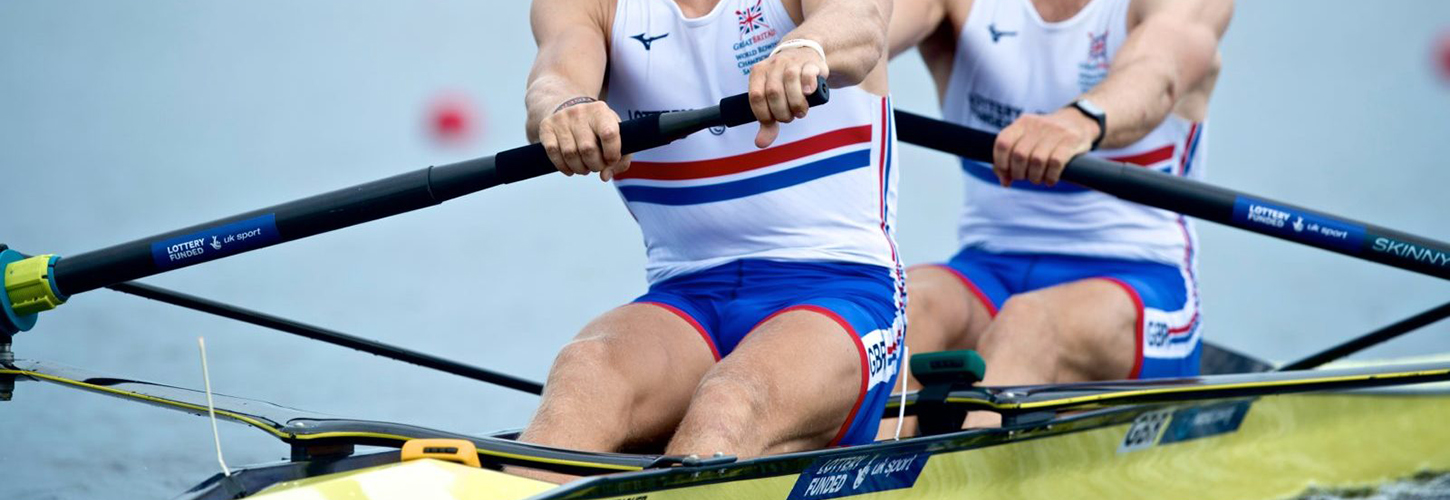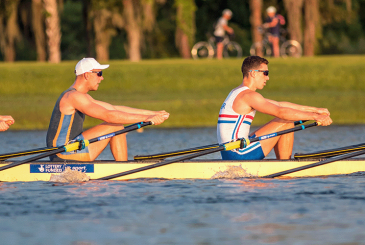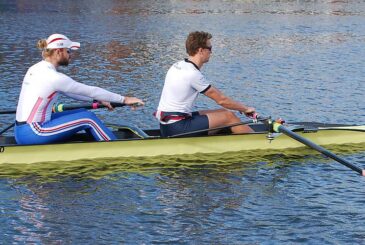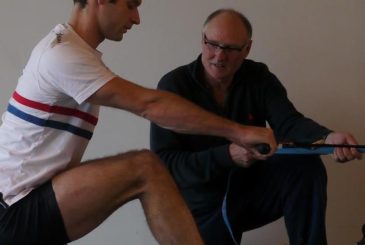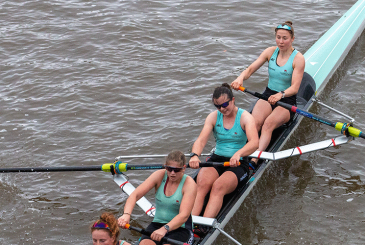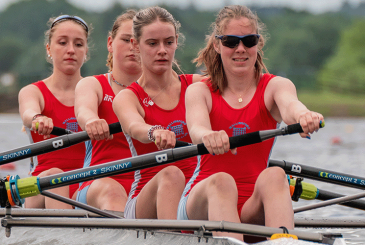GB Rowing Team coach Paul Reedy recommends that athletes should visualise the right time for the hip to open during the drive phase of the rowing stroke. Martin Gough finds out more
Watch an Olympic regatta and it will soon become obvious that the best crews have some key things in common, but also demonstrate some clear differences.
They will all clearly drive the boat hard at the start of the stroke but may find different ways to maintain speed through the stroke.
“You will find gold medallist crews that row very different kinds of strokes. All those styles of rowing strokes are successful,” says Paul Reedy, an Australian Olympic silver medallist in 1984, who has coached the Great Britain women’s lightweight double scull for the last two Olympiads.
“If we say technique is what the blade does in and out of the water, and style is defined by the individual or individual crew, there is quite a lot of latitude in terms of style.”
The research
Previously, Reedy has written about key performance indicators within the rowing stroke and what goes on between the catch and the point of maximum handle force.
The research looked at the angle of the hip relative to the back – the lumbar-pelvic ratio – and found that flexion in the lower back during that first part of the stroke is not only likely to cause injury but also to have a negative effect on boat speed. This is distinct, though from the opening of the hip relative to the legs. Research with elite female rowers at Imperial College in 2015 showed that many elements of the stroke change as rate increases but that peak hip moments remain constant.
Coaches generally agree that the start of the stroke must be dominated by the legs, with the body opening later in the drive. Where that opening begins, though, depends on the athlete and boat type.
“If you sit on the bank at Lucerne [regatta], there will be all sorts of things going on,” says Reedy, “but the main thing you will notice about everybody at the front [of races] is that their legs are working pretty fast.
“The big mistake a lot of people make is that they try to accelerate the body-opening in isolation”
“There certainly are a lot of people who don’t get a lot of rock-over – anterior tilt of the pelvis – but whatever happens, the first part of the stroke should be taken with the legs only, with the hips maintaining a forward tilt position.
“What you’re after is an overlapping sequence with the legs dominating the first part. Potentially, as boats get bigger, hip opening happens later and later in the drive.
“In a slow-moving boat you get a couple of rolls of the wheels on the seat then there’s the potential for the body to open against the legs. As boats get faster, you need to let the legs take over more and more.”
When to open the hip
How, then, should an athlete or coach visualise the right time for the hip to open?
“The resistance provided by the water at the catch gives way to easier and easier acceleration,” Reedy explains. “When the handle gets to mid-shin, that is a good time to start trying to make the hip opening; you need to in order to keep pressure on the blade. When the legs finish, your handle is at mid-thigh and you start drawing the arms in.”
Reedy uses a rule of thumb that the leg-dominated part of the drive should last 0.4 seconds.
“You develop most of the speed in the first 0.4 seconds and then try to maintain it for the rest of the stroke,” he says. “[The phase from] catch to maximum handle force is where the power is produced but the velocity will keep building if you’re able to keep pressure on the face of the blade. So the handle must keep getting quicker to the end of the leg drive.
In the first part of the drive it is important to drive the legs and hold the body so as to suspend bodyweight behind the oar handle to actively move the boat.
“The first part is where the speed is; the body can’t open quickly enough to put pressure on and be able to sustain it through the drive,” Reedy adds. “If you open the body right at the front, not only is it an empty movement but the weight would still end up being on the feet and therefore the boat would be heavier in the water.
He also emphasises the importance of thinking about the leg drive and hip-opening together: “The big mistake a lot of people make is that they try to accelerate the body-opening in isolation.” If the legs are driving hard, with the body opening against them, he says, “the only way you can accelerate the body further is to slow the legs down.”
Increased flexibility may improve an athlete’s ability to rock over and to open the hip while avoiding lower-back flexion but, as we have touched on already in this series, there may also be mental barriers to technical change.
“One of the biggest catalysts to change is injury,” Reedy says. “Quite often someone will come back from injury more interested in managing things.
“If you’ve got a gold medallist who doesn’t rock over and isn’t getting injured then it’s quite difficult to get them to change.
“Zac Purchase had a bad back but when he returned he became one of the role models of the group in terms of his postural control and awareness.”
Photo credit: Naomi Baker


